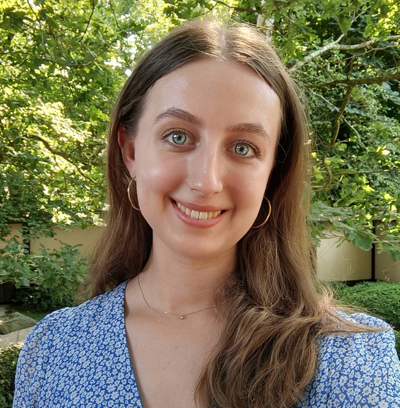Bubbles and waves for ultrasound imaging and therapy
Charlotte Nawijn is a PhD student in the Department Physics of Fluids. (Co)Promotors are prof.dr. M. Versluis and dr. G.P.R. Lajoinie from the Faculty of Science & Technology and dr. T.J. Segers from the Faculty of Electrical Engineering, Mathematics and Computer Science.
 Ultrasound is a versatile and accessible technique for both diagnostic and therapeutic purposes. Imaging and quantifying blood flow with ultrafast ultrasound imaging aids the diagnosis and monitoring of cardiovascular disease, but is hindered by a low signal-to-noise ratio (SNR). The transmission of coded pulse trains (cascaded waves) improves the SNR at a high frame rate, but suffers from motion artifacts, rendering it unsuitable for resolving fast arterial flows. The contrast of the blood pool compared to surrounding tissue can be improved using microbubbles. Optimizing this contrast requires an understanding of the microbubble response to ultrasound, which depends strongly on the viscoelastic properties of the bubble shell. In ultrasound therapy, drugs can be delivered locally at the desired location through the ultrasound-triggered release of encapsulated drugs attached to microbubbles. This approach can potentially limit adverse side effects, but requires detailed knowledge of the microbubble response to ultrasound to ensure optimal drug release.
Ultrasound is a versatile and accessible technique for both diagnostic and therapeutic purposes. Imaging and quantifying blood flow with ultrafast ultrasound imaging aids the diagnosis and monitoring of cardiovascular disease, but is hindered by a low signal-to-noise ratio (SNR). The transmission of coded pulse trains (cascaded waves) improves the SNR at a high frame rate, but suffers from motion artifacts, rendering it unsuitable for resolving fast arterial flows. The contrast of the blood pool compared to surrounding tissue can be improved using microbubbles. Optimizing this contrast requires an understanding of the microbubble response to ultrasound, which depends strongly on the viscoelastic properties of the bubble shell. In ultrasound therapy, drugs can be delivered locally at the desired location through the ultrasound-triggered release of encapsulated drugs attached to microbubbles. This approach can potentially limit adverse side effects, but requires detailed knowledge of the microbubble response to ultrasound to ensure optimal drug release.
This thesis consists of two parts. In Part I (Chapters 2 and 3) we characterize two types of microbubbles, for ultrasound therapy and imaging. In Part II (Chapters 4 and 5) we investigate novel cascaded transmission sequences for ultrafast ultrasound imaging.
In Chapter 2, we investigate the influence of the ultrasound driving frequency and pressure amplitude on the oscillation amplitude, shell rupture, and release of nanoparticles from individual microbubble drug carriers for ultrasound-assisted therapy.
In Chapter 3, we propose a novel stress-strain analysis to characterize individual microbubble contrast-enhancing agents for ultrasound imaging, which does not rely on prior knowledge of the viscoelastic microbubble shell behavior.
In Chapter 4, we investigate cascaded dual-polarity waves, consisting of the transmission of pulse trains of each four pulses with varying polarity. We propose a new decoding approach in the frequency domain, which allows for the highest possible frame rate at the cost of a slightly lower SNR improvement, thereby resulting in the highest flow tracking accuracy at high peak velocities.
In Chapter 5, we propose delay-encoding of cascaded waves, where a pulse train of identical pulses is transmitted with varying pulse delays. The ability to improve the SNR of linear and nonlinear signals makes this novel technique universally applicable for all types of ultrasound imaging, including contrast imaging.





